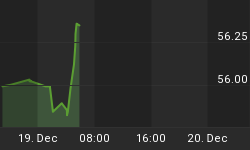Norway has a crisis, plenty of oil but apparently little butter. From "Norway butter shortage threatens Christmas treats" by Sapa-AFP via timeslive.co.za, 12 December,
"An acute butter shortage in Norway, one of the world's richest countries, has left people worrying how to bake their Christmas goodies with store shelves emptied and prices through the roof.
We say, "Let them eat lard!", as it can be produced all naturally and inorganic form. But more on the story,
"The shortfall, expected to last into January, amounts to between 500 and 1,000 tonnes, said Tine, Norway's main dairy company, while online sellers have offered 500-gramme[approximately 1.1 pounds] packs for up to 350 euros ($465)." [Emphasis added.]
"The dire shortage poses a serious challenge for Norwegians who are trying to finish their traditional Christmas baking -- a task which usually requires them to make at least seven different kinds of biscuits. [Cookies to those of you in Texas.]"
"The shortfall has been blamed on a rainy summer that cut into feed production and therefore dairy output, but also the ballooning popularity of a low-carbohydrate, fat-rich diet that has sent demand for butter soaring. 'Compared to 2010, demandhas grown by as much as 30 percent,' Tine spokesman Lars Galtung told AFP."
'Last Friday, customs officers stopped a Russian at the Norwegian-Swedish border and seized 90 kilos (198 pounds) of butter stashed in his car."
Why might Norwegian butter prices be so high? Well, as we have written many times, supply of any Agri-Food is price inelastic in the short-term. That not enough? Butter is not made in a factory. Butter is extracted from the milk produced by a cow. No matter how much money one offers a cow, she will not produce more milk. Cows are funny that way. Might work on Zinga's FarmVille,but not in the real world.
In Norway milk production is apparently seasonal. During the Summer lush grass is available for the cows, and they respond by happily producing much milk. Surplus butter produced during that period is then stored for later consumption. In the Winter, we suppose milk production "freezes up" without the bountiful grass feed. Money will not change that situation.
Price inelastic supply means that the quantity supplied of an Agri-Food does not respond to price in the short-term. Rising demand for a Agri-Commodity will only cause prices to rise. Agri-Food production may respond in the long-term to price. However, with most Agri-Foods having an annual production cycle, a full year may be necessary before additional production come forth.
Problem the world is facing is that Agri-Foods are now operating in price inelastic portion of the long-term supply curve.[For more discussion of this see Joy of Agri-Food Price Inelasticity , posted on our website.] As demand for Agri-Food around the world continues to rise we can only expect higher prices. Chinese demand for corn, for example, should continue pushing up the price of corn.
No matter what the price offered, it will not change the fact that corn is only harvested one time a year. Supply of corn over the next year is essentially already fixed. A certain amount of land will be prepared and planted with seed. The area of land to be planted in the next year will not change very much, and then largely due to shifts from other crops. The seeds, absolutely essential to the production of any Agri-Crop, have already been designed, and in most cases produced.
Little can influence or alter the reality that at the end of August next year the world will have only 1.8 months of corn consumption in the bins while the U.S. will have less than 1 month.(See latest USDA WASDE) Any incremental demand for corn from China importing corn will only increase the price. Such is the situation in most Agri-Foods around the world for the next decade.

While thinking about Norwegian butter crisis we happened to note the price of eggs, and yes we desperately need a life. As can be observed in the graph above, the price of eggs has had a rather positive price formation for some time. With Winter arriving in the mid Western U.S., the price of eggs could easily move to new highs. For remember, eggs are not produced in factories. Eggs are produced by chickens that apparently do not enjoy Winter any more than Norwegian cows. Go to Iowa, top U.S. egg producing state, in January with your wallet. No matter how much money one offers a hen, she will not produce more eggs.
Price is the secret we are giving you again today. Over time the only way that Norwegian cows will produce more milk, Iowa chickens produce more eggs, or Chinese demand for U.S. corn will be satisfied is through higher prices. To the Agri-Food producer higher prices mean higher revenues. To entice that higher production money will flow to Agri-Producers and those that provide goods and services to them. They will get the money from the hungry world, and enjoy the benefits of that money. Equities of those Agri-Companies shouldbenefit from this flow of money for some time into the future.
So, at this joyous holiday time of the year while the Norwegians are short their biscuits let the rest of us celebrate the warm, fuzzy feeling of greed, and take a look at Agri-Equities.
AGRI-FOOD THOUGHTS is from Ned W. Schmidt,CFA,CEBS, publisher of The Agri-Food Value View, a monthly exploration of the Agri-Food grand cycle being created by China, India, and Agri-Energy. To contract Ned or to learn more, use this link: www.agrifoodvalueview.com
















